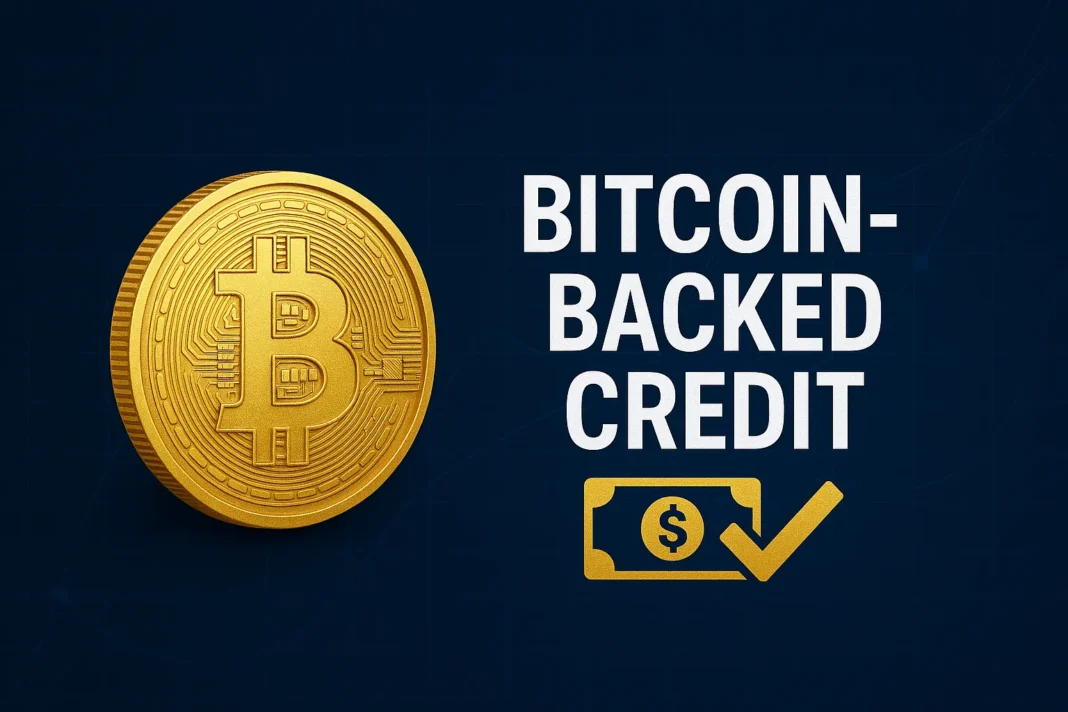In the rapidly evolving world of decentralized finance (DeFi), Bitcoin-Backed Credit is emerging as a transformative force. As Bitcoin continues to solidify its position as a digital store of value, its utility is expanding beyond investment into lending and credit markets. Within the first 100 words, it’s clear: Bitcoin-backed credit is not just a trend-it’s the next frontier in DeFi innovation.
This article explores the mechanics, platforms, institutional adoption, and global impact of Bitcoin-backed credit, drawing on trusted 2024–2025 research and expert opinions. From liquidity access to financial inclusion, Bitcoin-backed loans are reshaping how individuals and institutions interact with money.
1. Understanding Bitcoin-Backed Credit in DeFi
Bitcoin-backed credit refers to loans issued using Bitcoin as collateral. Borrowers lock their BTC in smart contracts or custodial platforms and receive fiat or stablecoins in return-without selling their assets. This model preserves exposure to Bitcoin’s price appreciation while unlocking liquidity.
According to Galaxy Research, the crypto lending market reached $36.5 billion in Q4 2024, with DeFi lending growing by 959% since Q4 2022. This surge reflects a growing appetite for decentralized borrowing mechanisms that bypass traditional financial intermediaries. [galaxy.com]
Platforms like Ledn, Coinbase, and Aave are leading the charge, offering both custodial and non-custodial Bitcoin-backed loans. Coinbase alone surpassed $1 billion in BTC-backed loan originations in mid-2025, signaling mainstream acceptance. [forbes.com]
2. Platforms Powering Bitcoin-Backed Lending
The infrastructure supporting Bitcoin-backed credit is diverse, spanning centralized finance (CeFi) and decentralized finance (DeFi) protocols.
Key Players in 2025:
- Ledn: Offers retail-focused BTC-backed loans with up to 50% loan-to-value (LTV) ratios and competitive interest rates. In January 2025 alone, Ledn issued $114 million in loans. [blockworks.co]
- Coinbase + Morpho Protocol: Coinbase’s integration with Morpho enables users to borrow USDC against BTC via smart contracts, with vaults offering up to 5.6% APY for lenders. [decrypt.co]
- Aave & Compound: These DeFi giants provide overcollateralized loans using wrapped BTC (wBTC), offering flexibility and transparency.
- Debifi: A peer-to-peer platform launching in 2025, enabling long-term loans with non-custodial smart contracts and no KYC requirements. [bitcoinmagazine.com]
These platforms differ in terms of custody, interest rates, LTV ratios, and risk management. For example, Unchained Capital uses multi-signature wallets, allowing borrowers to retain partial control over their BTC. [cryptomaniaks.com]
3. Institutional Adoption and Financial Inclusion
Bitcoin-backed credit is no longer confined to crypto-native users. Traditional financial institutions are entering the space, driven by regulatory clarity and the success of Bitcoin ETFs.
A report by Osler LLP highlights how banks and credit unions are exploring Bitcoin-backed lending as a new revenue stream, with APRs reaching 10%+. Partnerships like BIGG Digital Assets and APX Lending exemplify this shift. [osler.com]
Moreover, Bitcoin-backed credit is proving to be a lifeline for the unbanked. In regions plagued by inflation and limited access to banking, such as Argentina and parts of Africa, BTC-backed loans offer liquidity without the need for credit scores or documentation. [beincrypto.com]
As Kevin Charles, CEO of Open Bitcoin Credit Protocol, notes:
“Bitcoin-backed credit is not just a financial innovation-it’s a gateway to global financial inclusion.” [beincrypto.com]
4. Risks, Regulation, and the Road Ahead
While promising, Bitcoin-backed credit is not without risks. Volatility remains a key concern. A sudden drop in BTC’s price can trigger liquidations, especially in overcollateralized loans.
Regulatory frameworks are evolving. The Bank for International Settlements (BIS) warns of financial stability risks in DeFi, advocating for embedded smart contract rules and oversight of stablecoins. [bis.org]
However, 2025 has seen a softening regulatory environment, with jurisdictions like the U.S. and Canada embracing crypto lending under experimental legal regimes. This paves the way for broader institutional participation and safer consumer access. [osler.com]
Innovations like self-repaying loans (e.g., Alchemix) and liquid staking are also mitigating risks by improving capital efficiency and reducing reliance on volatile assets. [coinledger.io]
5. The Future of Bitcoin-Backed Credit in DeFi
The future is bright. Market research from Messari and Chainalysis predicts exponential growth in crypto-backed lending, potentially representing a significant portion of the total crypto market by 2026. [beincrypto.com]
Bitcoin-backed credit is evolving into a layered financial system, combining the stability of fiat with the decentralization of crypto. As David Seroy writes in Bitcoin Magazine:
“Credit-based, Bitcoin-backed dollars will act as the bridge connecting Bitcoin, dollars, the Lightning Network, and free banking in a hyperbitcoinized world.” [bitcoinmagazine.com]
With platforms maturing, regulations aligning, and global demand rising, Bitcoin-backed credit is poised to redefine lending for the digital age.
People Also Asked
What is Bitcoin-Backed Credit in DeFi?
It allows users to borrow fiat or stablecoins by using Bitcoin as collateral, enabling liquidity without selling their crypto assets.
How do Bitcoin-backed loans work?
Borrowers deposit BTC into a lending platform, receive a loan based on a loan-to-value ratio, and repay with interest. If BTC’s value drops, additional collateral may be required.
Are Bitcoin-backed loans safe?
Safety depends on the platform. Non-custodial DeFi protocols offer transparency and control, while custodial services may carry counterparty risks.
Which platforms offer Bitcoin-backed credit in 2025?
Top platforms include Ledn, Coinbase (via Morpho), Aave, Compound, Unchained Capital, and Debifi.
Why is Bitcoin-backed credit important for financial inclusion?
It provides access to credit for the unbanked, bypassing traditional requirements like credit scores and documentation, especially in inflation-hit regions.


